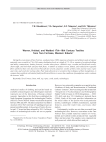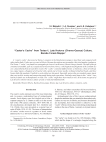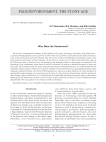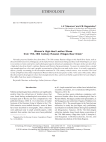Статьи журнала - Archaeology, Ethnology & Anthropology of Eurasia
Все статьи: 351

Статья
This article presents 44 radiocarbon dates from 18 water wells of different Bronze Age periods at Kamennyi Ambar settlement, in the southern Trans-Urals. At the preliminary stage, statistical outliers were identifi ed, which enhanced the reliability of the conclusions. Potsherds from the fi lling of the wells, contextual analysis of dating samples, and 14C dates allowed us to carry out the cultural attribution of nearly all wells (31 out of 34). The analyzed wells were subdivided into four chronostratigraphic groups corresponding to various settlement phases. Their duration and chronological limits were estimated. Most wells were found to belong to the Sintashta-Petrovka period (densely spaced linearly arranged blocks of structures inside fortifi ed areas). This period comprised three construction phases, the latest of which correlates with the Petrovka ceramics. The second period, marked by randomly arranged structures, is associated with the Srubnaya-Alakul artifacts, and is represented by only four wells. The simulation results suggest that the site existed for less than one and a half centuries, including a short chronological gap between the two periods. The Sintashta (phases 1 and 2) and Petrovka (phase 3) were two consecutive traditions, which may have overlapped during the late period. In the Srubnaya-Alakul period (phase 4), a transformation of the architectural tradition took place, and the layout and construction of the wells changed too.
Бесплатно

Wooden paddles from Trans-Urals and from eastern and Western European peat-bog sites
Статья
Бесплатно

Woven, knitted, and wattled 17th–18th century textiles from Tara fortress, Western Siberia
Статья обзорная
Бесплатно

“Caster's cache” from Tartas-1, late Krotovo (Cherno-ozerye) culture, Baraba forest-steppe
Статья обзорная
Бесплатно








